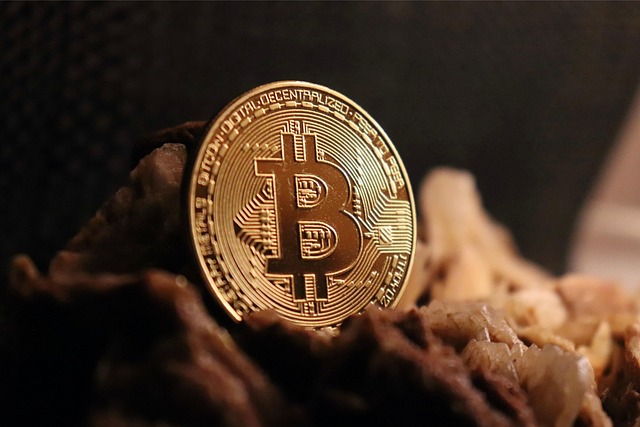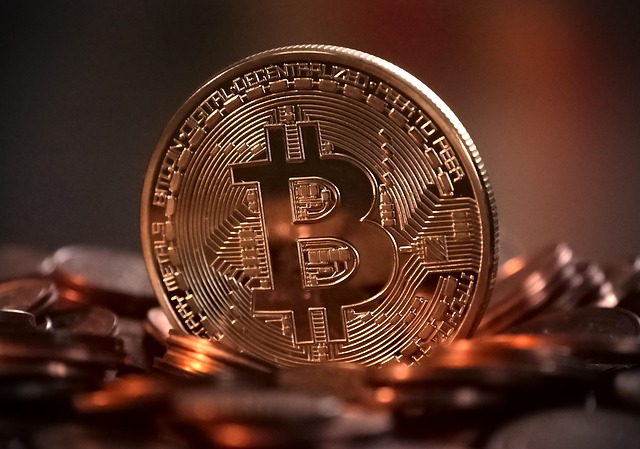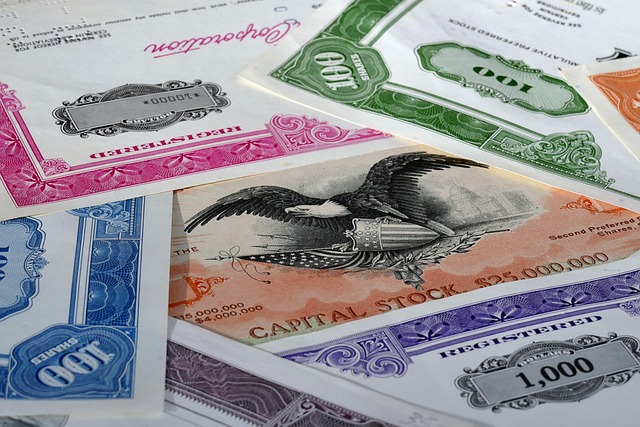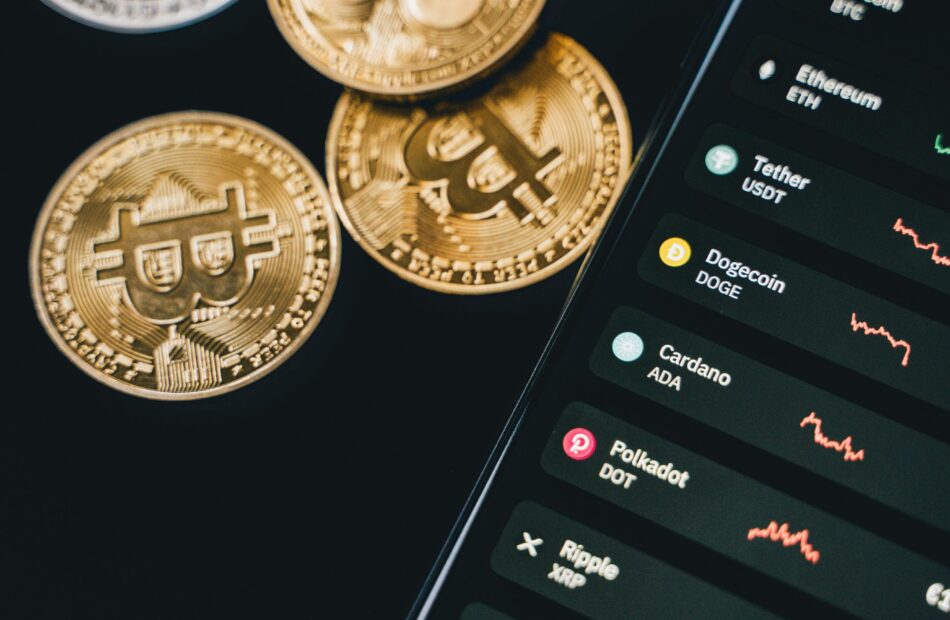Bitcoin bucks downtrend with rally to $85.8K — Are BTC bulls really back?
Bitcoin (BTC) reclaimed the $84,500 level on April 14, and the recovery appears partially fueled by the announcement of partial import tariff relief by US President Donald Trump. However, traders’ optimism faded on April 13 when it became apparent that the relaxation was temporary and that tariffs on the electronics supply chain could be revisited.Uncertainty surrounding the ongoing trade tensions between the US and China impacted Bitcoin markets, causing traders to lose some of their regained confidence. This explains why Bitcoin’s price failed to break above $86,000 and why BTC derivatives showed limited short-term potential, potentially setting the tone for the next few days.Bitcoin 2-month futures annualized premium. Source: Laevitas.chThe premium on Bitcoin monthly futures contracts peaked at 6.5% on April 11 but has since dropped to 5%, which is near a neutral to bearish threshold. Sellers typically require a 5% to 10% annualized premium for longer settlement periods, so anything below this range indicates reduced interest from leveraged buyers.Bitcoin sentiment dims as stock market ties dent bullish momentumTraders’ brief excitement can be linked to President Trump’s April 13 announcement that tariffs on imported semiconductors would be reviewed during the week. This suggests that exemptions for smartphones and computers are not final, according to Yahoo Finance. Trump reportedly said: “We want to make our chips and semiconductors and other things in our country.”Bitcoin traders experienced emotional swings during this period of fluctuating expectations. The performance of broader markets, particularly large technology companies reliant on global trade, appears to have influenced Bitcoin sentiment. The strong intraday correlation between Bitcoin and stock markets has dampened bullish enthusiasm, leaving open questions about whether this effect is limited to BTC futures.S&P 500 futures (left) vs. Bitcoin/USD (right). Source: TradingView / CointelegraphTo determine whether Bitcoin traders’ sentiment is merely mirroring trends in the S&P 500, it is helpful to examine the BTC options markets. If professional traders anticipate a significant price drop, the 25% delta skew indicator will rise above 6%, as put (sell) options become more expensive than call (buy) options.Bitcoin 30-day options 25% delta skew (put-call) at Deribit. Source: Laevitas.chOn April 13, the Bitcoin options delta skew briefly dipped below 0%, signaling mild optimism. However, this momentum did not hold on April 14, reinforcing data from Bitcoin futures that show no significant bullish sentiment despite prices recovering from the $74,440 lows.Weak spot Bitcoin ETF inflows also behind traders’ limited optimismAnother way to gauge market sentiment is by analyzing stablecoin demand in China. Strong retail interest in cryptocurrencies usually pushes stablecoins to trade at a premium of 2% or more above the official US dollar rate. In contrast, a premium below 0.5% often indicates fear as traders move away from crypto markets.Related: Crypto markets ‘relatively orderly’ despite Trump tariff chaos: NYDIGUSDT Tether (USDT/CNY) vs. US dollar/CNY. Source: OKXBetween April 6 and April 11, Tether (USDT) in China traded at a 1.2% premium, reflecting moderate enthusiasm. However, this trend reversed, with the premium now at just 0.5%, suggesting that the earlier excitement has dissipated. Hence, traders remain cautious and show little confidence in Bitcoin surpassing $90,000 in the near term.The announcement of Strategy’s $286 million Bitcoin acquisition at $82,618 failed to boost sentiment, as investors suspect that the recent temporary decoupling from stock market trends was largely driven by this purchase. Similarly, Bitcoin spot exchange-traded funds (ETFs) saw $277 million in outflows between April 9 and April 11, further weakening any potential improvement in trader confidence.This article is for general information purposes and is not intended to be and should not be taken as legal or investment advice. The views, thoughts, and opinions expressed here are the author’s alone and do not necessarily reflect or represent the views and opinions of Cointelegraph.
South Korea blocks 14 crypto exchanges on Apple Store — Report
South Korea is expanding a ban on digital asset firms’ applications servicing its citizens. On April 11, the country’s Financial Services Commission (FSC) announced that 14 crypto exchanges were blocked on the Apple store. Among the affected exchanges are KuCoin and MEXC.The report, which was made public on April 14, says the banned exchanges were allegedly operating as unregistered overseas virtual asset operators. The report also states that the Financial Information Analysis Institution (FIU) will continue to promote the blocking of the apps and internet sites of such operators to prevent money laundering and user damage.The request to block applications on the Apple Store comes after Google Play blocked access to several unregistered exchanges on March 26. KuCoin and MEXC were also targeted during the blocking of the Google Play apps. The FSC published a list of 22 unregistered platforms operating in the country, with 17 of them already blocked on Google’s marketplace. The 17 crypto exchanges blocked on Google Play. Source: FSCAccording to the FSC report, users will not be able to download the apps on the Apple Store, while existing users will not be able to update the apps. The FSC notes that “unreported business activities are criminal punishment matters” with penalties of up to five years in prison and a fine of up to 50 million won ($35,200).FIU considers sanctions against unregistered VASPsOn March 21, South Korean publication Hankyung reported that the FIU and the FSC were considering sanctions against crypto exchanges operating in the country without registration with local regulators. The sanctions included blocking access to the companies’ apps.In South Korea, operators of crypto sales, brokerage, management, and storage must report to the FIU. Failure to comply with registration and reports is subject to penalties and sanctions.Related: South Korea reports first crypto ‘pump and dump’ case under new lawThe latest sanctions come as crypto is reaching a “saturation point” in South Korea. As of March 31, crypto exchange users in the country passed 16 million — equivalent to over 30% of the population. Industry officials predict that the number could surpass 20 million by the end of 2025.Over 20% of South Korean public officials hold cryptocurrencies, with the total amount reaching $9.8 million on March 27. The assets varied and included Bitcoin (BTC), Ether (ETH), XRP (XRP), and Dogecoin (DOGE).Magazine: Asia Express: Low users, sex predators kill Korean metaverses, 3AC sues Terra
Bitcoin surge to $137K by Q3 possible if US Treasury continues liquidity injections — Analysts
The US Treasury has injected $500 billion into financial markets since February by drawing liquidity from its Treasury General Account (TGA), funding government operations after a $36 trillion debt ceiling was hit on Jan. 2, 2025.Macroeconomic financial analyst Tomas said that this liquidity surge boosted the net Federal Reserve liquidity to $6.3 trillion, and it may support Bitcoin’s (BTC) price in the future, even though risk assets have reflected minimal growth so far. US Treasury General Account’s expected liquidity flow. Source: X.comThe TGA represents the government’s checking account at the Federal Reserve, holding capital for daily operations like paying bills or collecting taxes. A decrease in TGA capital means the balance has been deployed into the broader economy, boosting available cash in the markets. Tomas explained that The TGA drawdown commenced on Feb. 12, following the exhaustion of “extraordinary measures” after the debt ceiling was reached. The TGA balance has dropped from $842 to roughly $342 billion, releasing liquidity into the system, and the targeted liquidity is expected to rise up to $600 billion by the end of April. The analyst added that the current tax season will temporarily drain liquidity, but the drawdown is expected to resume in May. If debt ceiling talks extend to August, net liquidity could hit a multi-year high of $6.6 trillion, which could cause a bullish tailwind for Bitcoin. Bitcoin’s correlation with global liquidity. Source: Lynalden.comAccording to a study by financial analyst Lyn Alden, Bitcoin has historically moved 83% of the time in line with global liquidity in a given 12-month period. The research termed “Bitcoin a Global Liquidity Barometer” compared Bitcoin to other major asset classes such as SPX, gold and VT, and BTC topped the correlation index with respect to global liquidity. Past TGA drawdowns in 2022 and 2023 have fueled speculative assets like Bitcoin. Thus, a $600 billion boost, plus billions more added over Q2-Q3, could lift BTC’s value if market conditions remain stable. Related: Bitcoin traders target $90K as apparent tariff exemptions ease US Treasury yieldsBitcoin eyes $137,000 by Q2-Q3, says analystAnonymous crypto trader Titan of Crypto shared a bullish outlook for Bitcoin, predicting that BTC could surge to a new all-time high of $137,000 by July-August 2025. In a recent X post, the analyst pointed out a bullish pennant pattern on the daily chart, with the price potentially heading toward a positive breakout. Bitcoin bullish pennant by Titan of Crypto. Source: X.comHowever, before pushing chips into a long conviction play, BTC must break and retain a position above its 200-day exponential moving average (EMA). As illustrated in the chart, Bitcoin faces resistance from all three key EMAs, namely, the 50-day, 100-day and 200-day indicators. A collective reclaim above each moving average on a higher time frame chart could further strengthen the bullish case, allowing the crypto to retest its six-figure targets. Bitcoin 1-day chart analysis. Source: Cointelegraph/TradingViewRelated: Bybit integrates Avalon through CeFi to DeFi bridge for Bitcoin yieldThis article does not contain investment advice or recommendations. Every investment and trading move involves risk, and readers should conduct their own research when making a decision.
Anchorage Digital faces scrutiny from US Homeland Security — Report
The US Department of Homeland Security’s El Dorado Task Force has reportedly launched an investigation into Anchorage Digital Bank, a Wall Street-backed cryptocurrency firm. According to an April 14 Barron’s report, members of the task force have contacted former employees of the company over the past weeks to examine its practices and policies. Citing unidentified sources, the report claims the probe looks at potential financial crimes within Anchorage. The reported Homeland task force probe hints at cross-national financial activities. Established in 1992, the El Dorado Task Force focuses on “transnational money laundering” activities and financial crimes carried out by organizations. Anchorage is co-founded by Portuguese-American entrepreneur Diogo Mónica and Nathan McCauley, according to its website. Along with its US businesses, Anchorage has operations in Singapore and Portugal. Its investors include Andreessen Horowitz, Goldman Sachs and Visa, among others. Anchorage Digital is the only federally chartered crypto bank in the United States. It received its national trust bank charter from the Office of the Comptroller of the Currency (OCC) in January 2021. Despite its advanced regulatory position, Anchorage Digital has faced regulatory challenges in the US. In April 2022, the OCC issued a consent order against the bank for deficiencies in its Bank Secrecy Act and Anti-Money Laundering compliance programs. At the time, the company was ordered to establish a committee to address the alleged issues under the oversight of the OCC.Cointelegraph reached out to Anchorage for comment but had not received a response at the time of publication. Anchorage’s crypto footprintAnchorage was founded in 2017, and since then has been expanding its crypto footprint with services for institutional clients. The company is a custodian of BlackRock’s Bitcoin exchange-traded funds (ETFs) alongside Coinbase and BitGo. BlackRock’s BTC funds have attracted over $35.5 billion in cumulative inflows since its launch in January 2024. Another of Anchorage’s clients is Cantor Fitzgerald. The company has offered custody and collateral management for Cantor’s Bitcoin holdings since March 2025. Anchorage reported over $50 billion in assets under management in 2024. Among Anchorage’s custody competitors are players such as Ripple, Kraken, Taurus and Fireblocks, but the storage of digital assets has also attracted traditional financial institutions to the crypto field. HSBC, Citi and BNY Mellon — America’s oldest bank — are also competing to safeguard crypto assets for institutional clients. According to Fireblocks’ Adam Levine, senior vice president of corporate development, the US market lacks qualified custodians for digital assets. “[…] there are limited options for certain market participants to keep their digital assets in safe keeping via a qualified custodian,” Levine told Cointelegraph in a previous interview.A 2025 survey by EY reveals that 59% of institutional investors plan to allocate over 5% of their assets under management to cryptocurrencies, indicating a growing demand for institutional-grade custody services.Institutional investors are expected to increase crypto allocations in 2025. Source: EYMagazine: SEC’s U-turn on crypto leaves key questions unanswered
SEC delays staking decision for Grayscale ETH ETFs
The United States Securities and Exchange Commission (SEC) has delayed a decision on whether to approve Ether staking in two Grayscale funds. The decision on Grayscale Ethereum Trust ETF and Grayscale Ethereum Mini Trust ETF has been postponed until June 1, according to an April 14 announcement from the SEC. The deadline for a decision is the end of October.On Feb. 14, the New York Stock Exchange (NYSE) filed a proposed rule change on behalf of Grayscale that would permit investors in the company’s Ether (ETH) ETFs to stake their holdings. Staking is the process of locking up cryptocurrency in a wallet to support the operations and security of a blockchain network, offering stakers rewards in return. The feature is considered a potentially integral part of Ether ETFs, as it could generate yield to investors, increasing the attractiveness of the funds.SEC’s announcement of the delay. Source: SECAnnual yield on staked Ether is estimated at 2.4% on Coinbase, while on Kraken, another US-based exchange, it ranges from 2% to 7%. According to Sosovalue, Ether ETFs have had a cumulative net inflow of $2.28 billion since their launch in 2024. The race for staking on Ether ETFs includes other asset managers, including BlackRock’s 21Shares iShares Ethereum Trust. The company sought permission to offer staking services in February and is currently waiting for the agency approval. SEC approves options for multiple spot Ether ETFsDespite the delay on staking filings, the SEC is moving forward with regulatory requests surrounding crypto ETFs. On April 9, the agency approved options trading for multiple spot Ether ETFs, allowing the derivates feature on funds from BlackRock’, Bitwise and Grayscale’s ETFs. Options trading involves the right to buy and sell contracts that give the investors the right but not the obligation to buy an asset at a certain price. The approval broadens the funds utility for institutional investors.The efforts to expand the appeal of Ether ETFs reflect the lack of adoption in contrast with Bitcoin (BTC) ETFs launched in January 2024. While the Ether ETFs amassed a net cumulative inflow of $2.2 billion as of April 11, Bitcoin funds flows topped $35.4 billion according to Sosovalue.Ether has also had a rough time during this bull market compared to other assets like XRP (XRP) and Solana (SOL). The asset’s 52-week high of $4,112 did not surpass its November 2021 peak all-time-high value of $4,866. The token is trading below the $2,000 mark on April 14.Magazine: What are native rollups? Full guide to Ethereum’s latest innovation
Price analysis 4/14: SPX, DXY, BTC, ETH, XRP, BNB, SOL, DOGE, ADA, LEO
Bitcoin (BTC) bulls are trying to start the week on a positive note by pushing the price above $85,000. Michael Saylor’s Strategy has used the recent dip to buy 3,459 Bitcoin for $285.5 million at an average price of $82,618. That boosts the total holding of the firm to 531,644 Bitcoin purchased at an average price of $67,556.However, not everyone is bullish in the near term. Several institutional investors seem to have trimmed their holdings. CoinShares reported on April 14 that digital asset exchange-traded products (ETPs) witnessed $795 million in outflows last week. The $7.2 billion in outflows since February have reversed nearly all year-to-date inflows, now at just $165 million.Daily cryptocurrency market performance. Source: Coin360Although Bitcoin seems to have bottomed out in the short term, a roaring bull market rally is unlikely to start in a hurry. The tariff headlines and the outcome of the tariff talks between the United States and other countries could dictate the price action.Could Bitcoin build upon the recovery, pulling altcoins higher? Let’s analyze the charts to find out.S&P 500 Index price analysisThe S&P 500 Index (SPX) witnessed a hugely volatile week, but a positive sign is that lower levels attracted solid buying by the bulls.SPX daily chart. Source: Cointelegraph/TradingViewAfter the massive volatility of the past few days, the index could enter a quieter phase. Sellers are likely to sell the rallies near 5,500, while the bulls are expected to buy the dips to the 5,119 support. That signals a possible range-bound action between 5,500 and 5,119 for some time.The next trending move is expected to begin after buyers push the price above 5,500 or sink below 4,950. If the 5,500 level gets taken out, the index could surge to 5,800.US Dollar Index price analysisThe US Dollar Index (DXY) has been in a freefall since turning down from the 20-day exponential moving average (102.81) on April 10.DXY daily chart. Source: Cointelegraph/TradingViewBuyers defended the 99.57 level on a closing basis on April 11, but the bears renewed their selling on April 14. If the price closes below 99.57, the index could tumble to 97.50 and, after that, to 95. The longer the price remains below 99.57, the greater the risk of starting a new downtrend.If buyers want to prevent a downward move, they will have to swiftly push the price back above 99.57. That could start a recovery to 101.Bitcoin price analysisBitcoin broke above the resistance line on April 12, and the bulls successfully held the retest of the breakout level on April 13.BTC/USDT daily chart. Source: Cointelegraph/TradingViewThe 20-day EMA ($82,979) has flattened out, and the RSI is near the midpoint, suggesting that the selling pressure is reducing. The BTC/USDT pair could climb to $89,000, which is likely to act as a stiff resistance. If the price turns down sharply from $89,000 and breaks below the 20-day EMA, it will indicate a range formation. The pair may oscillate between $89,000 and $73,777 for a few days.If sellers want to trap the aggressive bulls and retain control, they will have to quickly pull the price back below the 20-day EMA. If they do that, the pair may descend to $78,500 and subsequently to the vital support at $73,777.Ether price analysisEther (ETH) is facing selling at the 20-day EMA ($1,722), as seen from the long wick on the April 14 candlestick.ETH/USDT daily chart. Source: Cointelegraph/TradingViewIf the price plummets below $1,546, the ETH/USDT pair could retest the $1,368 support. This is a crucial level for the bulls to defend because a break below $1,368 could start the next leg of the downtrend toward $1,150.Conversely, if buyers propel the price above the 20-day EMA, it signals that the bears are losing their grip. There is resistance at the 50-day SMA ($1,955), but it is likely to be crossed. The pair may then ascend to the solid resistance at $2,111.XRP price analysisXRP (XRP) turned down from the 50-day SMA ($2.24) on April 13, indicating that sellers are active at higher levels.XRP/USDT daily chart. Source: Cointelegraph/TradingViewThe 20-day EMA ($2.10) has flattened out, and the RSI is near the midpoint, indicating a balance between supply and demand. A break below $2 will tilt the advantage in favor of the bears. The XRP/USDT pair could drop to $1.72 and later to $1.61.Buyers will gain the upper hand if they push and maintain the price above the 50-day SMA. If they can pull it off, the pair could rally to the resistance line. Sellers are expected to aggressively defend the resistance line because a break above it signals a potential trend change.BNB price analysisBNB (BNB) is facing resistance at the downtrend line, but a minor positive is that the bulls have not ceded much ground to the bears. BNB/USDT daily chart. Source: Cointelegraph/TradingViewThat increases the likelihood of a break above the downtrend line. If that happens, the BNB/USDT pair could ascend to $645. Sellers will try to guard the $645 level, but it is likely to be crossed.This positive view will be invalidated in the near term if the price turns down sharply from the downtrend line and breaks below $566. That could keep the pair stuck inside the triangle for a while longer.Solana price analysisSellers are trying to defend the 50-day SMA ($130) in Solana (SOL), but the bulls have kept up the pressure.SOL/USDT daily chart. Source: Cointelegraph/TradingViewIf the price closes above the 50-day SMA, the SOL/USDT pair could rise to the $147 to $153 resistance zone. Sellers are expected to vigorously defend this zone, but if the bulls prevail, the pair could surge to $180.The first support on the downside is the 20-day EMA ($123). A bounce off the 20-day EMA will keep the positive momentum intact, while a break below it could sink the pair to $110 and eventually to $95.Related: Solana rallies 20% against Ethereum, but is $300 SOL price within reach?Dogecoin price analysisBuyers are trying to start a recovery in Dogecoin (DOGE) but are expected to face stiff resistance from the bears at the moving averages.DOGE/USDT daily chart. Source: Cointelegraph/TradingViewIf the price turns down from the moving averages, the bears will again attempt to sink the DOGE/USDT pair below $0.14. If they manage to do that, the selling could accelerate, and the pair may slump to $0.10.Contrarily, if buyers propel the price above the moving averages, the pair could rally to $0.20. This is an important near-term level to watch out for because a break above it will complete a double-bottom pattern. The pair could then climb toward the pattern target of $0.26.Cardano price analysisBuyers are struggling to push Cardano (ADA) above the 20-day EMA ($0.65), indicating that demand dries up at higher levels.ADA/USDT daily chart. Source: Cointelegraph/TradingViewIf the price turns down from the 20-day EMA, the next support on the downside is $0.58 and then $0.50. Buyers are expected to fiercely defend the $0.50 level because a break below it could sink the ADA/USDT pair to $0.40.On the upside, buyers will have to drive and maintain the price above the 50-day SMA ($0.71) to signal that the downtrend could be over. That could propel the pair to $0.83 and subsequently to $1.03.UNUS SED LEO price analysisBuyers are trying to push UNUS SED LEO (LEO) above the 20-day EMA ($9.39), but the bears are posing a substantial challenge.LEO/USD daily chart. Source: Cointelegraph/TradingViewThe flattening 20-day EMA and the RSI near the midpoint suggest a balance between supply and demand. That could keep the LEO/USD pair stuck between $9.90 and $8.79 for a few days.The next trending move could begin on a break above $9.90 or below $8.79. If buyers kick the price above $9.90, the pair will complete a bullish ascending triangle pattern. This bullish setup has a target objective of $12.04.On the downside, a break below $8.70 could signal the start of a deeper correction toward $8.30.This article does not contain investment advice or recommendations. Every investment and trading move involves risk, and readers should conduct their own research when making a decision.
Bitcoin traders target $90K as apparent tariff exemptions ease US Treasury yields
The 2-year and 10-year US Treasury yields dipped on Monday, April 14, after Bitcoin (BTC) closed its best weekly performance since the second week of January. Bitcoin gained 6.79% over the past week, but are enough factors aligned to support continued price upside? The 10-year treasury yield declined by 8.2 basis points to 4.40% during the New York trading session, while the 2-year treasury saw an 8 basis point slip to 3.88%. The drop in yields occurred on the back of possible tariff exemptions on smartphones, computers, and semiconductors, which were introduced to give US companies time to move production domestically. However, US President Donald Trump emphasized these exemptions were temporary in nature.US 10-year treasury bond yields chart. Source: Cointelegraph/TradingViewThe tariff exemptions announced on April 12 came at the end of a bullish week for Bitcoin. After forming new yearly lows at $74,500, BTC price jumped 15% to $86,100 between April 9-13. Easing US treasury yields could be a double-edged sword for Bitcoin. Lower yields reduce the appeal for fixed-income assets, improving capital injection into risk-on assets like BTC. Still, the uncertainty of “temporary exemptions” and the ongoing trade war with China keeps Bitcoin susceptible to further price volatility. As an “inflation hedge,” Bitcoin continues to draw mixed opinions, but recent uncertainty over trade policies increases inflation fears, improving BTC’s store of value narrative. Yet, recent US inflation data suggested a cooling trend, as the Consumer Price Index (CPI) for March 2025 indicated a year-over-year inflation rate of 2.4%, down from 2.8% in February, marking the lowest since February 2023, which could be indirectly bearish for Bitcoin in the short term.Related: Trade war vs record M2 money supply: 5 things to know in Bitcoin this weekBitcoin price hurdles present at $88K to $90KTrading resource Material Indicators noted that Bitcoin retained a bullish position above its 50-weekly moving average and quarterly open at $82,500. A strong weekly close implied a higher possibility that Bitcoin is less likely to re-visit its previous weekly lows anytime soon. The analysis added, “Bitcoin bulls now face strong technical and liquidity-based resistance between the trend line and the 200-day MA. Expecting “Spoofy” to move asks at $88k and $92k before they get filled.”Likewise, Alphractal founder Joao Wedson suggested that Bitcoin may be nearing a bullish reversal, as the Perpetual-Spot Gap on Binance—a key indicator tracking the price difference between Bitcoin’s perpetual futures and spot markets, has been narrowing since late 2024.Bitcoin Perpetual-spot price gap chart. Source: X.comIn a recent X post, Wedson highlighted that this shrinking gap, currently negative, signals fading bearish sentiment, with historical trends from 2020–2021 and 2024 showing that a positive gap often leads to a Bitcoin rally. Wedson noted that a flip to a positive gap could indicate returning buyer momentum. However, he cautioned that such negative gaps persisted during the 2022–2023 bear market.Related: Michael Saylor’s Strategy buys $285M Bitcoin amid market uncertaintyThis article does not contain investment advice or recommendations. Every investment and trading move involves risk, and readers should conduct their own research when making a decision.
Mantra CEO says OM token recovery ‘primary concern’ but in early stages
Mantra CEO John Mullin addressed key concerns from the community following the sharp decline in the OM token during an Ask Me Anything (AMA) session hosted by Cointelegraph on April 14.Mullin reassured users that Mantra and its partners are actively working to support the recovery of the Mantra (OM) token, though he noted that details around token buybacks and potential burns are still being developed.“We’re still in the early stages of putting together this plan for potential buyback of tokens,” the CEO said, adding that the OM token recovery is Mantra’s “preeminent and primary concern right now.”At the time of writing, OM traded at $0.73, slightly higher than its post-collapse low of $0.52 recorded on April 13 at around 7:30 pm UTC, according to data from CoinGecko.“Baseless allegations”In addition to denying reports claiming that key Mantra investors dumped the OM token pre-crash, the Mantra CEO also denied allegations that the Mantra team controls 90% of the token’s supply.“I think it’s baseless. We posted a community transparency report last week, and it shows all the different wallets,” Mullin said, highlighting the “two sides” of Mantra’s tokenomics.Source: Cointelegraph“You have the Ethereum side and you have the mainnet side,” Mullin noted, adding the Ethereum-based token is hard capped and has been around since August 2020. “The biggest holder of OM on exchange is Binance,” Mullin continued, referring the public to Etherscan records.The top eight addresses of OM holdings. Source: EtherscanHowever, the top OM wallet is currently held by crypto exchange OKX, which controls 14% of the circulating supply, or roughly 130 million tokens.What’s next for Mantra’s $109-million MEF fund?Mullin also addressed the Mantra Ecosystem Fund (MEF), a $109-million fund launched on April 7 in collaboration with its major strategic investors, including Laser Digital and Shorooq.Other investors in the fund also included Brevan Howard Digital, Valor Capital, Three Point Capital, Amber Group, Manifold, UoB Venture, Damac, Fuse, LVNA Capital, Forte and others.Related: Mantra bounces 200% after OM price crash but poses LUNA-like ‘big scandal’ riskAccording to Mullin, the fund does not solely consist of Mantra’s OM token and has “dollar commitments and dollar contributions.”Investors in Mantra’s $109-million fund. Source: Mantra“We’ll continue to invest and support the ecosystem as part of this recovery plan,” the CEO stated.End of the staking program on BinanceIn the AMA, the Mantra CEO also said that a 38-million-OM transaction to the Binance cold wallet on April 14 is related to a staking program on Binance.“It was actually Binance,” Mullin said, adding that Binance had OM tokens on its exchange that it was using as a staking program.Source: Onchain Lens“So, they just returned them because the staking program ended,” he said.Mullin also emphasized that many of the transactions that caught the community’s reactions post-crash involved collaterals by an unnamed exchange.“Effectively, those tokens were being used as collateral on an exchange. Then, the exchange decided that it was not the position they wanted to maintain anymore, for whatever reason,” Mullin said, adding:“So, what happened was basically the positions were taken over by the exchange that took the collateral and started selling, which caused a cascade of sell pressure and forced more liquidations.”Mullin said Mantra remains committed to addressing the situation as transparently as possible.“We’re not running from anything,” he said, adding that the incident was a “very unfortunate situation.”Magazine: Bitcoin eyes $100K by June, Shaq to settle NFT lawsuit, and more: Hodler’s Digest, April 6–12








